In the process of learning calligraphy, we often encounter the word "anti-shoulder"! So what is shoulder resistance?
The generally accepted explanation for the term "shoulder resistance" is: writing a horizontal drawing tilted upward to the right is called shoulder resistance. The greater the angle of inclination, the greater the shoulder resistance. The smaller the angle of inclination, the greater the shoulder resistance. Small.
So why should we write diagonally when drawing horizontally? The main reason is that human eyesight is not balanced. If the horizontal drawing is really flat, due to the illusion of the eyes, it will look like it is going down to the right, as shown in Figure 1.
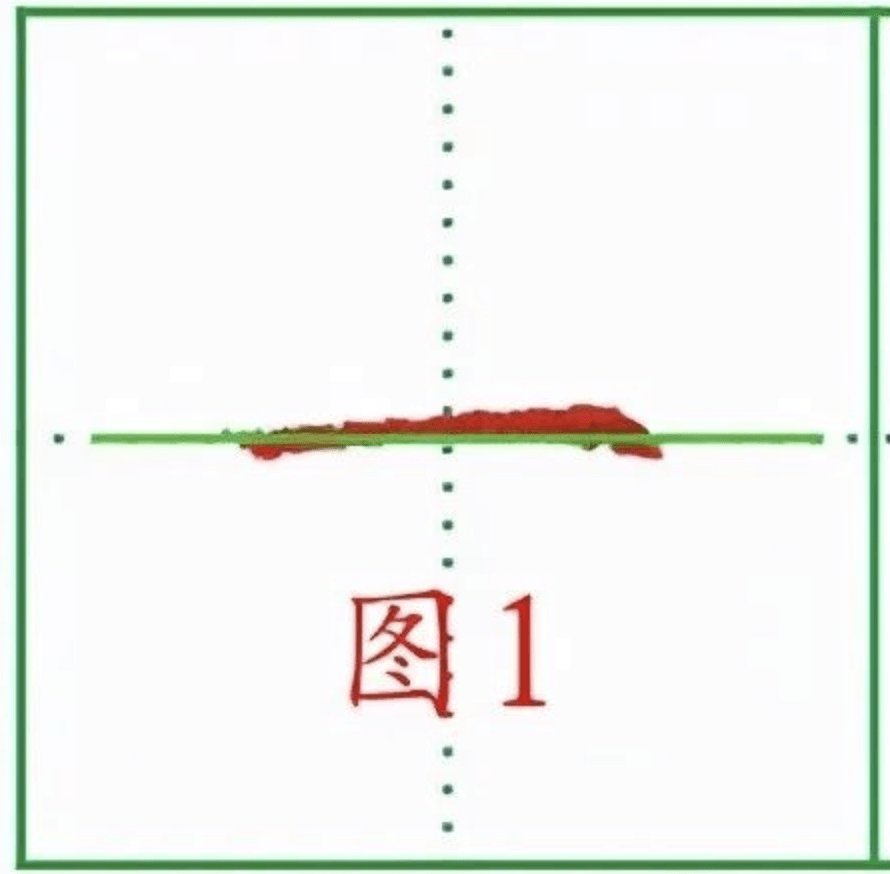
Therefore, horizontal drawings must be slightly tilted when writing, and the angle of inclination is about 5° to 7°. If the horizontal center line of the field grid is used as the reference line, the starting stroke of the horizontal drawing should be below the horizontal center line, and the ending pen should be on the horizontal center line. The height of the upward slope is almost the height of a stroke, as shown in Figure 2.
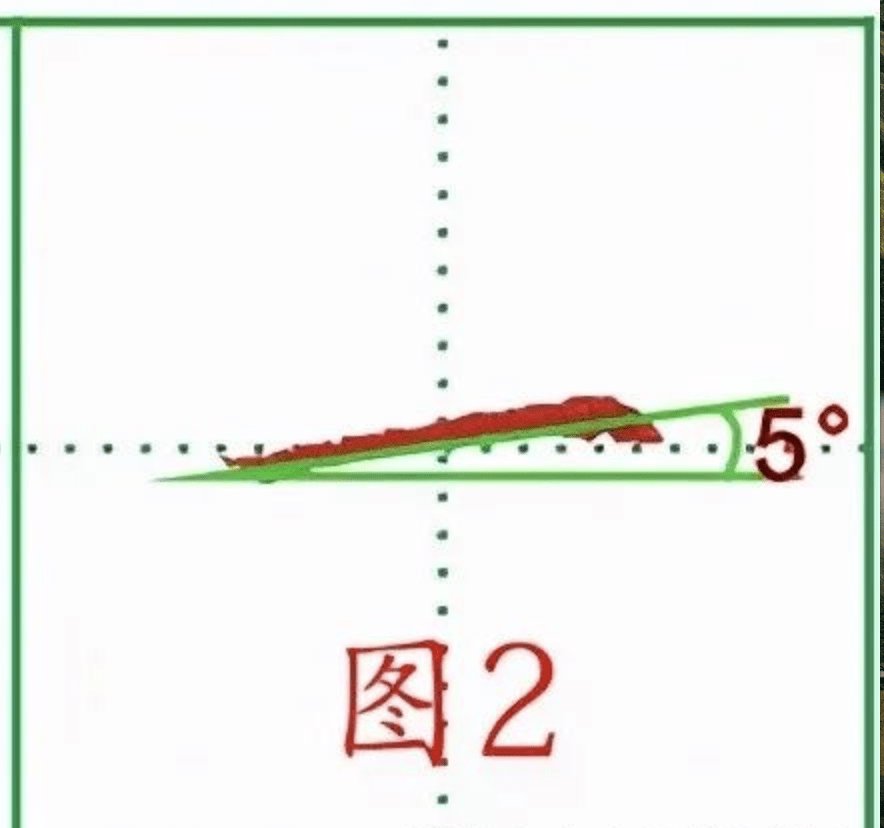
Two different forms of horizontal painting
Are all horizontal paintings at this angle? of course not! This angle is generally for long and horizontal angles.
Everyone knows that horizontal paintings can be divided into:
Three forms: long horizontal, medium horizontal, short horizontal
Three different forms of horizontal drawings have different requirements for shoulder resistance. Below we will make a detailed analysis of different forms of horizontal drawings:
According to the size of the shoulder, we can divide the horizontal drawing into three situations:
The first is a long horizontal line with relatively small shoulder resistance: This type of long horizontal line is generally used at the bottom of a character, which has a supporting effect on the upper parts and is flat as a whole.
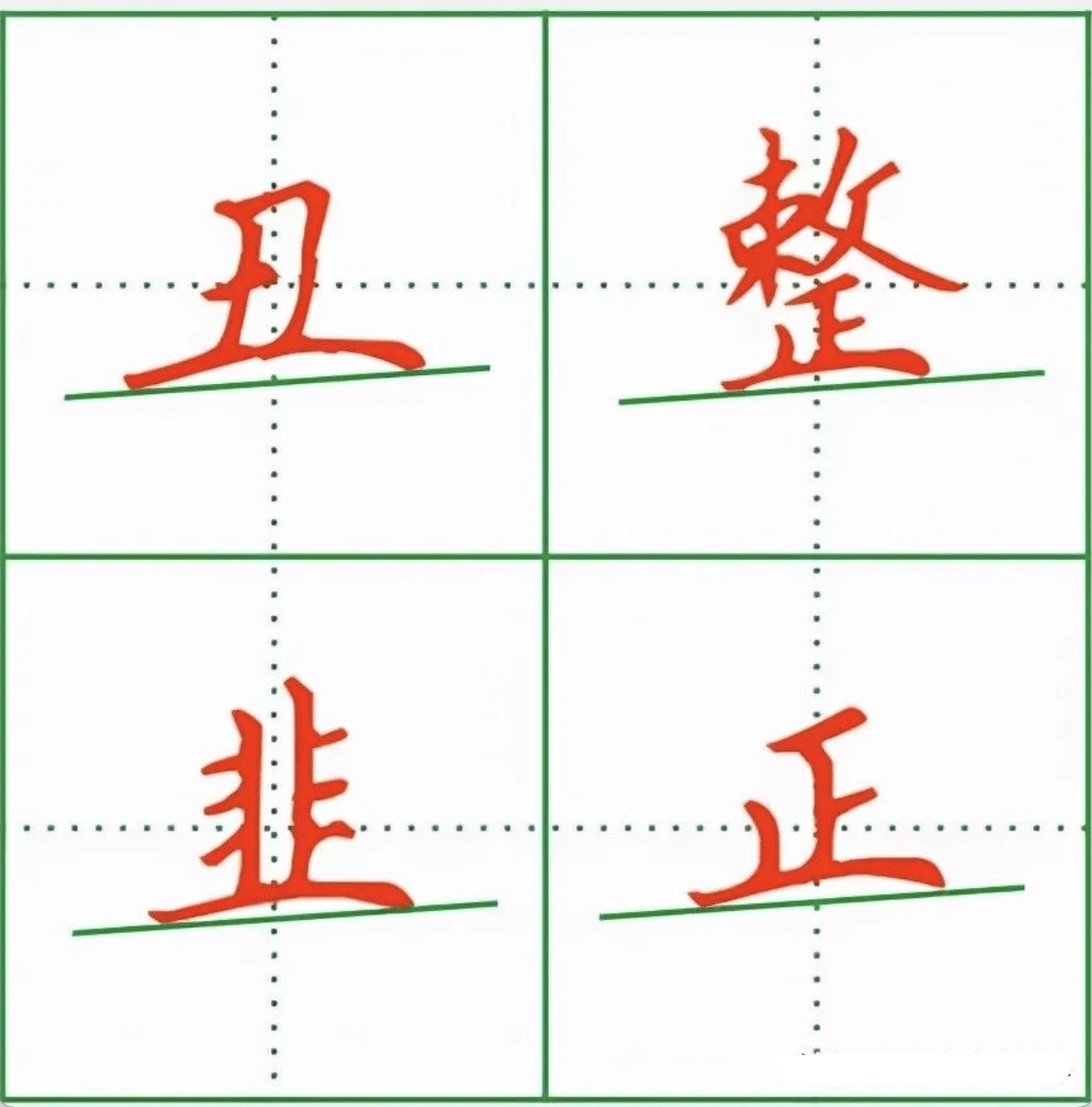
The long horizontal support of the base generally has less shoulder resistance and is generally flat.
The second is the short horizontal and medium horizontal strokes with slightly larger shoulders: Short horizontal strokes and medium horizontal strokes generally have slightly larger shoulder straps in knotted characters. When writing, pay attention to the equal spacing and unevenness.
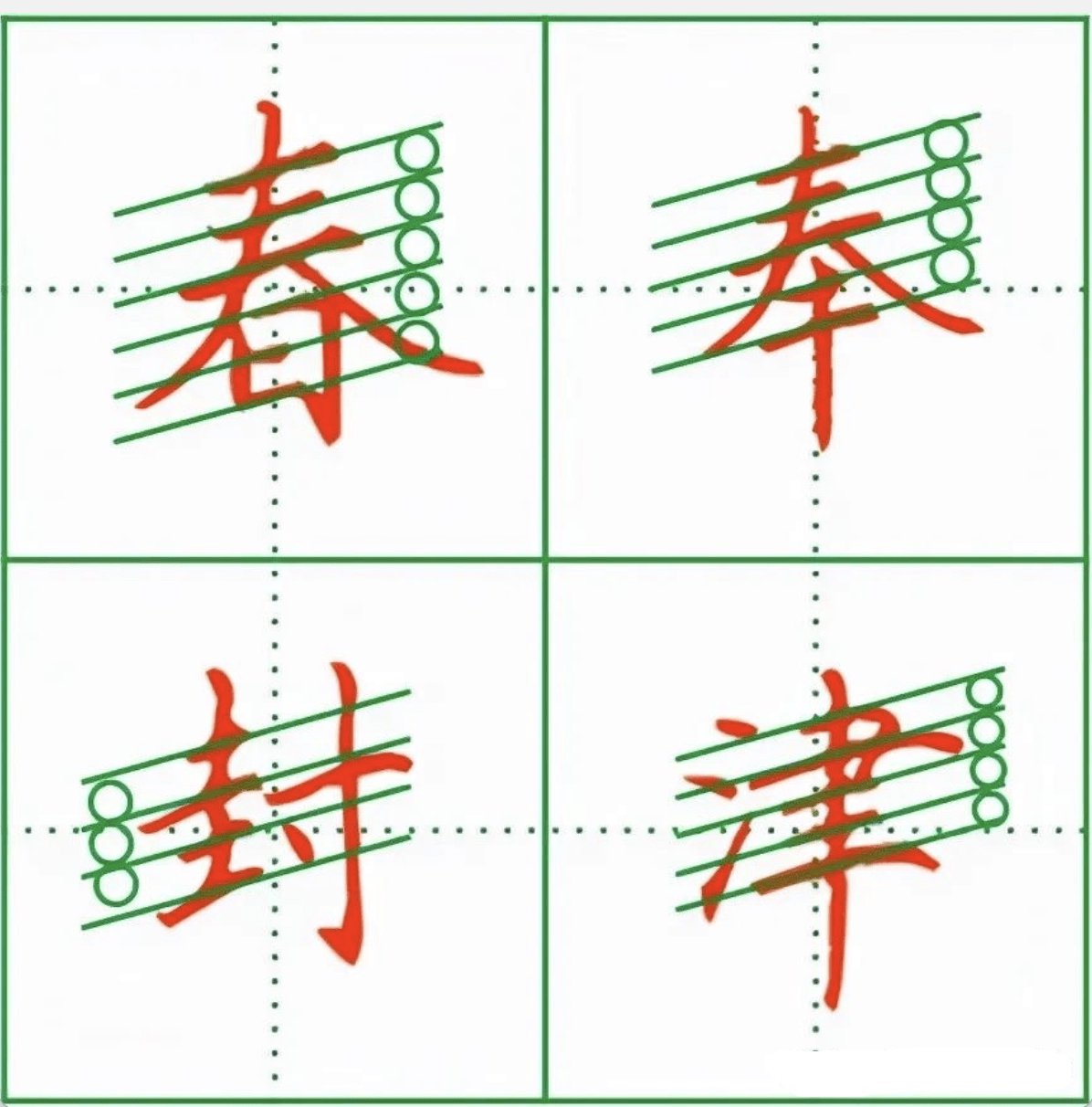
For words with a lot of horizontal strokes, be sure to keep the spacing in mind when writing.
The third is short or medium horizontal strokes with particularly large shoulder resistance: This is mainly the case when in a word, the horizontal stroke below is an oblique hook, a diagonal stroke, or a vertical hook, and the upper horizontal stroke should be as large as possible.
Because the three strokes extending to the lower right are generally the main strokes of the character, they are heavier. Only when the horizontal strokes increase the upward tilt, the whole character will appear stable.
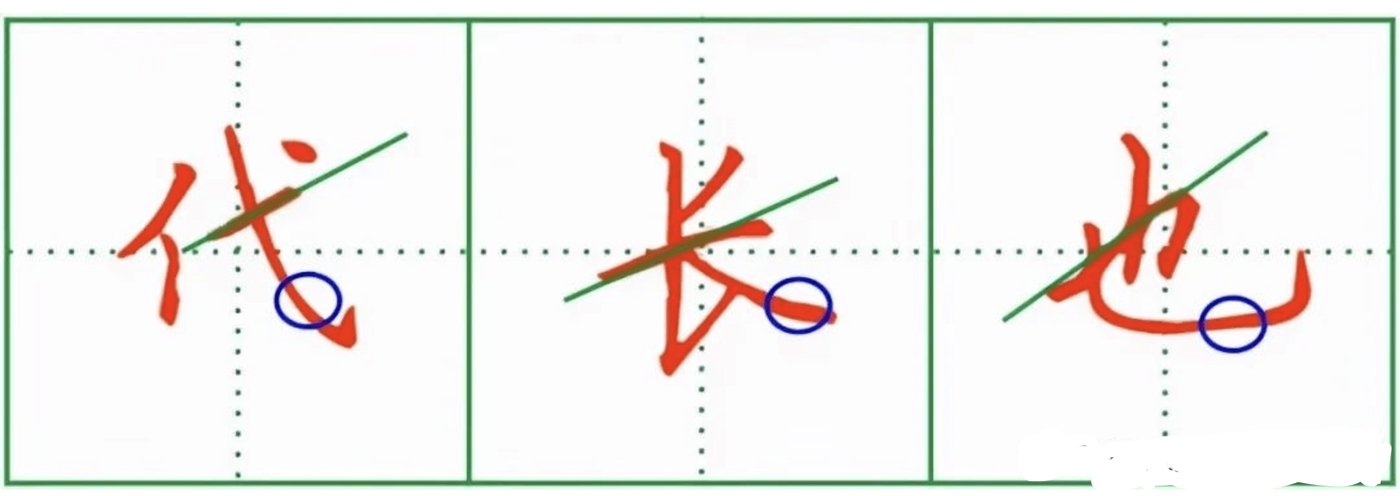
The lower part of the horizontal drawing is an oblique hook. When the hook is bent obliquely or vertically, the upper horizontal drawing should be as large as possible.
Above we have analyzed the three situations of shoulder resistance in independent horizontal drawings. So, should shoulder resistance be used in horizontal drawings in compound strokes? Let’s look at some examples below:
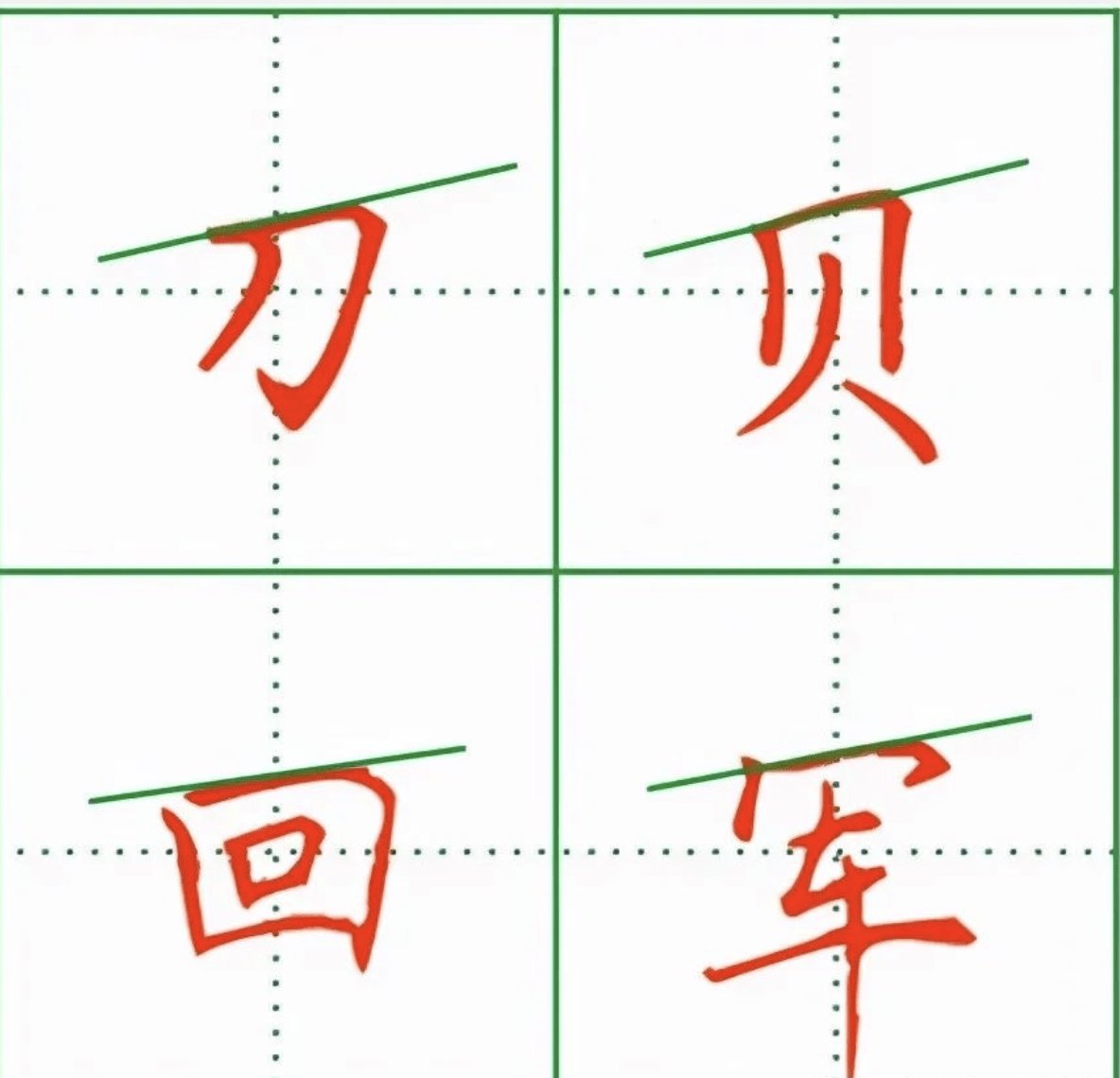
In compound strokes, short horizontal strokes are large and long horizontal strokes are small.
It can be seen from the above examples that the usage of horizontal strokes in compound strokes is the same as that of independent horizontal strokes. The short-term resistance of horizontal strokes is greater. The common sense of horizontal strokes is that the horizontal strokes are flat and the resistance is small.
Above, I have shared with you three situations of horizontal strokes resisting shoulders. We can basically draw a conclusion. Whether the horizontal strokes are independent horizontal strokes or compound strokes, they are all inclined. We can call it taking the momentum. Oblique potential.
Next, let's consider whether other stipples or components have an oblique trend when knotting.
Through a lot of comparative analysis, we found that "stippling combinations" are usually oblique in knot characters. There are generally three forms of stipple combinations in Chinese characters: two-dot combination, three-dot combination, and four-dot combination. Below we analyze them separately:
1. Two-point combination
If we connect the two points on the left and right of the following characters with a straight line, we will get a horizontal drawing that is the same size as the horizontal drawing. Therefore, the combination of the two points is also oblique in writing. In the process of writing Chinese characters, we can regard the two points as a horizontal stroke that resists the shoulder.
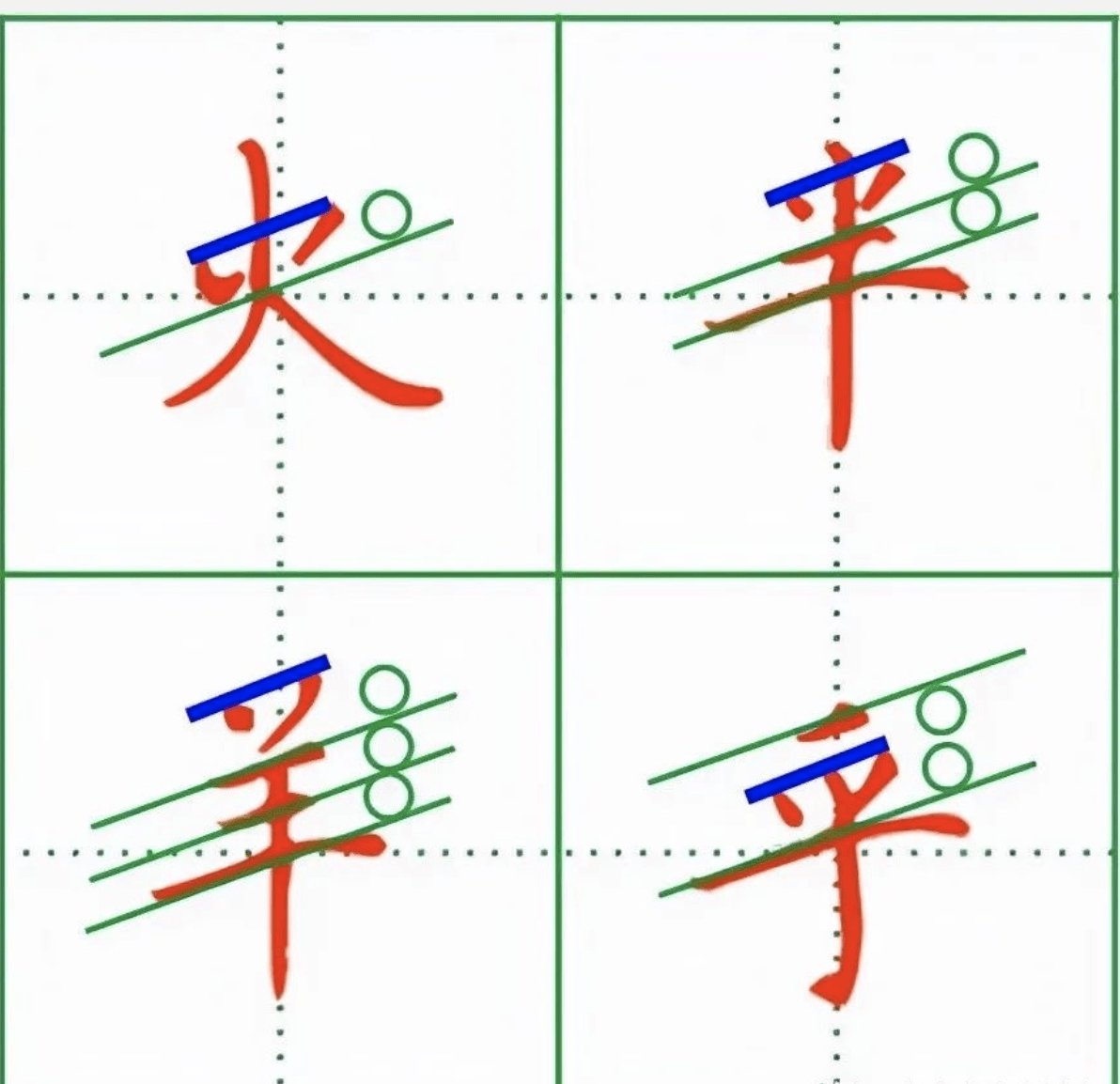
For characters with two dots on the left and right, the left dot is generally low and the right dot is high when written, and the overall shape is inclined.
2. Three-point combination
In the same way, if we connect three dots side by side in a line, we will also get a shoulder-resistant horizontal stroke. Therefore, when we encounter a word with three connected dots, the three-point starting stroke should gradually rise in a stepped manner and be in line with the horizontal stroke. Draw the same size as the shoulder.
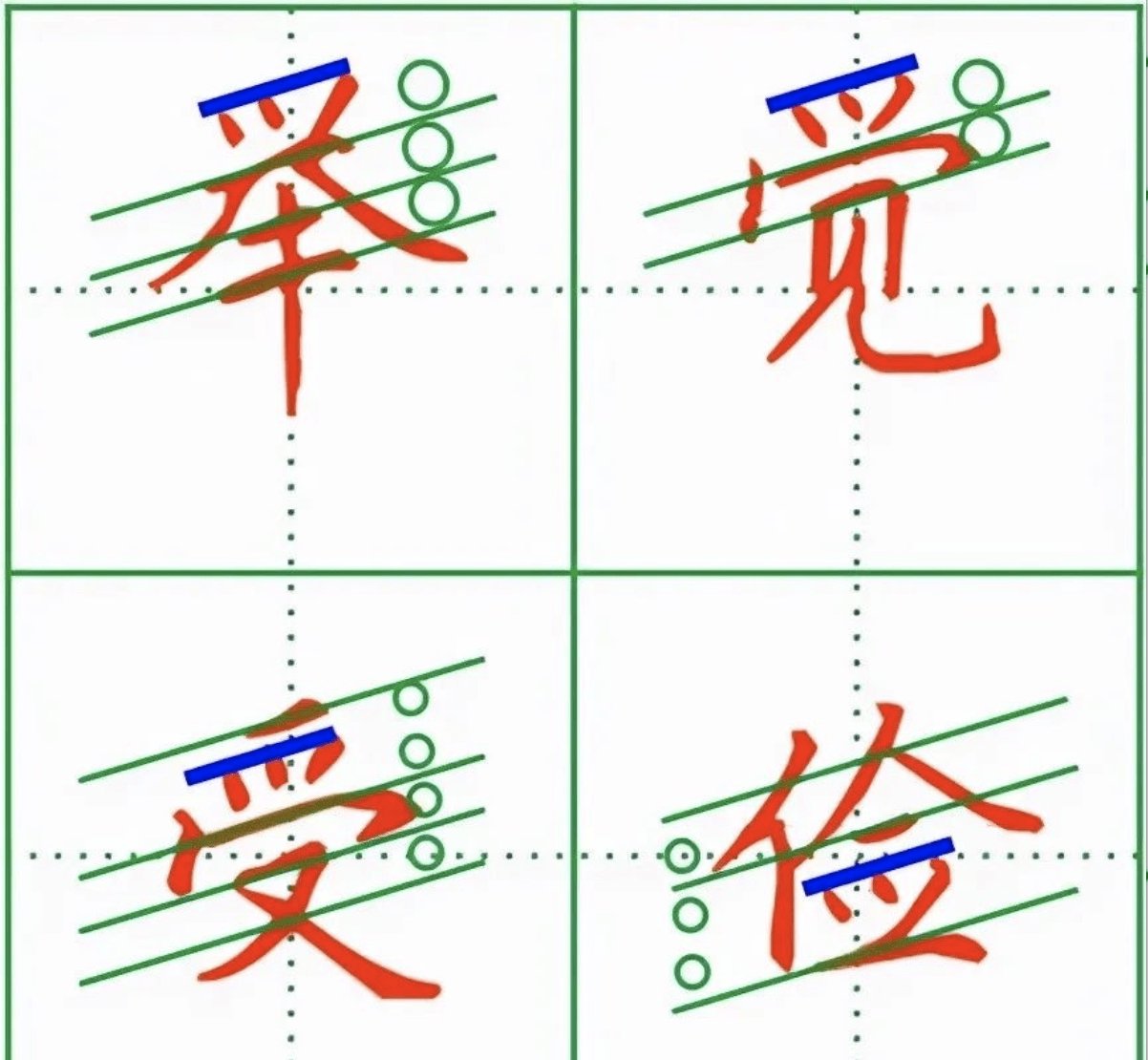
The requirements for writing three dots side by side are that starting from three dots, the height gradually rises, and the line connecting the three dots is the same size as the horizontal stroke in the word.
3.Four-point combination
The four-point combination usually appears in the form of a character base. If we connect the four-point starting strokes with a straight line, we will get something like a long horizontal stroke. Therefore, in the four-point base writing, the four-point starting strokes should be on the same straight line. On the top, the overall shape is flat at the top and arced at the bottom.

The base of the four points is generally that the two points on the left and right are larger, and the two points in the middle are smaller. The starting point of the four points is roughly on the same straight line.
From the above analysis, we can see that for the combination of stipples, we can write according to the requirements of horizontal drawing and shoulder resistance during the writing process. If we learn this trick, the writing method of the combination of stipples will be simple.
In fact, we can also extend the horizontal strokes further, that is, use diagonal postures. The diagonal postures can also be used in the arrangement of knot components. The slope potential of a component can be divided into the slope potential of a single component and the slope potential of two components.
The oblique orientation of individual components, for example: the flat mouth in the character "中", the day above the character "ANG", the frame above the character "GUO", and the four above the character "Bai" are all oblique, leaning upward to the right.
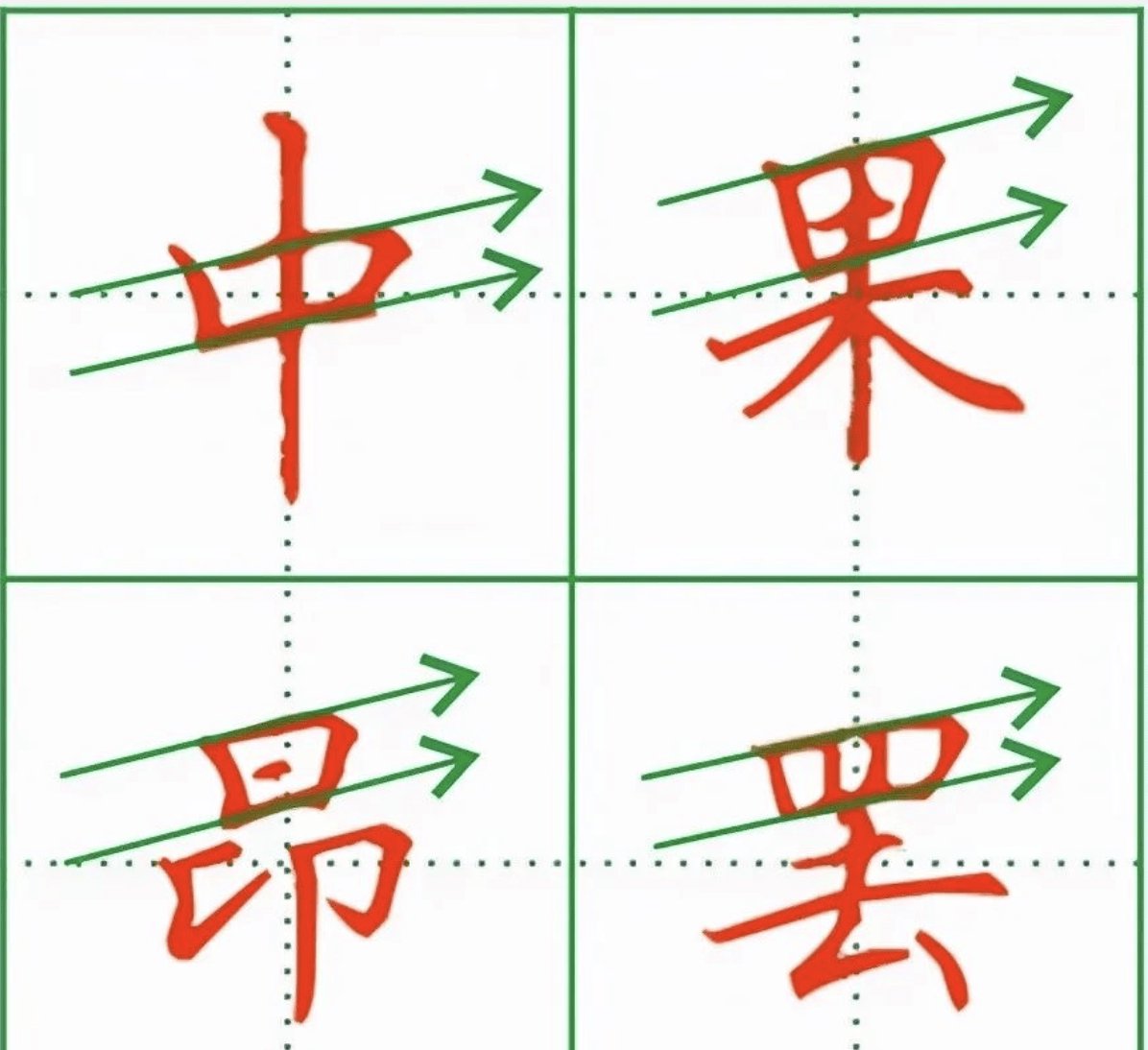
The closed parts are generally in the same direction as the horizontal strokes in the characters, and the overall shape is oblique.
The oblique potential of the two parts is mainly suitable for the whole character with an upper and lower structure, and the upper half with a left and right structure. For characters with this structure type, in the treatment of knotted characters, the upper part must be in an oblique position with the left bottom and the right high. That is, the right part should be written as high as possible, and the left and right parts should be treated with shoulder resistance.
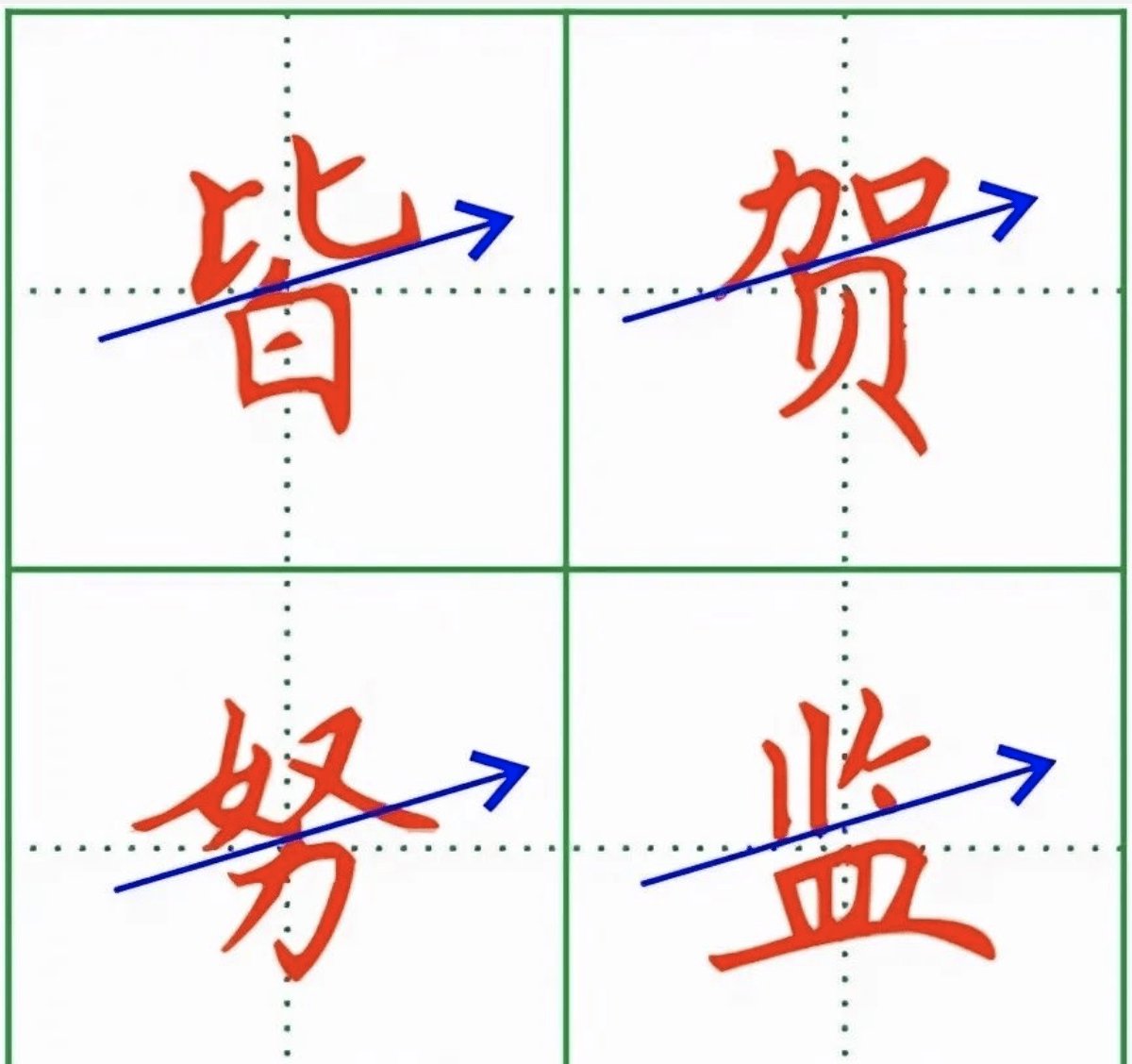
The upper parts should be bottom on the left and high on the right, and the overall shape should be inclined.
Through the understanding of the cross-drawing shoulder, stipple combination and special structural types of word-forming components, we understand that the above situations are the actual application of the oblique method of forming characters.
At the same time, through today's study, we must also realize that in the process of learning calligraphy, we must learn to draw inferences from one example, carefully analyze the structural characteristics, and find out the same rules, thereby improving learning efficiency.
The material comes from the Internet, and the copyright belongs to the original author!








